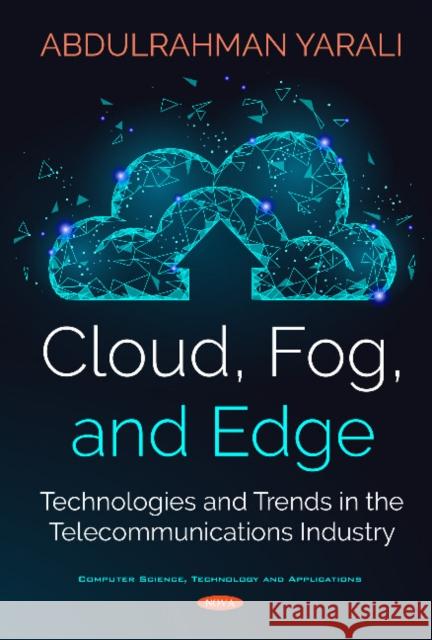Cloud, Fog, and Edge: Technologies and Trends in Telecommunications Industry » książka
Cloud, Fog, and Edge: Technologies and Trends in Telecommunications Industry
ISBN-13: 9781536144437 / Angielski / Twarda / 2018 / 326 str.
The 21st century has marked the arrival of new digital technologies that transform the way enterprises operate and people live their lives. From social media sites and smartphone technology to video streaming and cloud computing, there has been a bevy of new applications that are impacting society and business seemingly on a daily basis. Considering technology and networking is a constantly changing field, some of its aspects need to be changed to conform to newly set trends. Even though prior network management frameworks have proved efficient in the past years, change is inevitable. More and more people use the internet and more scalable network management architecture needs to be developed. In that respect, the telecommunication industry has seen tremendous growth accompanied by various challenges. Ideally, the expectations of all these include the quality of service and customer services as well as mitigating any threats that are affecting the service providers. With many opportunities being granted, telecommunication has a wide range of emerging content. For instance, there is the exponential growth of the Internet of Things devices and 5G network data, and the acceleration of cloud-based network adoption. More so, there are smart cities, mobile broadband, massive connectivity, artificial intelligence, and automation. Moving on to trends in big data, the development of the Internet of Things has brought into the picture countless innovative sources of big data. Cloud computing has served as one of the biggest trends in the last ten years and fog computing exhibits greater prospects. Cloud computing is changing the way we access applications and hardware as well as the business and healthcare environments. Even though there is presently a considerable amount of work underway at cloud data centers, the fog computing trend is bound to change things. Many of the important and disruptive IoT trends are taking place in the industrial setting in terms of transport, manufacturing, and utilities. In terms of smart living, turning regular homes into smart homes is a developing trend that is progressively getting bigger every single day. Automation and pervasive networks emerge from the combination of virtualization, IoT, densification, and 5G to replace today's atomistic networks. All of these trends are coined from the dynamism that is witnessed in computerized systems that have the unending need to offer improved and more efficient services. In this book, the author has discussed the future roadmap of telecommunications and the major disruptions that will drive the most change in this industry. The focus of this book concerns the cloud, fog and edge computing with their benefits, and challenges.











